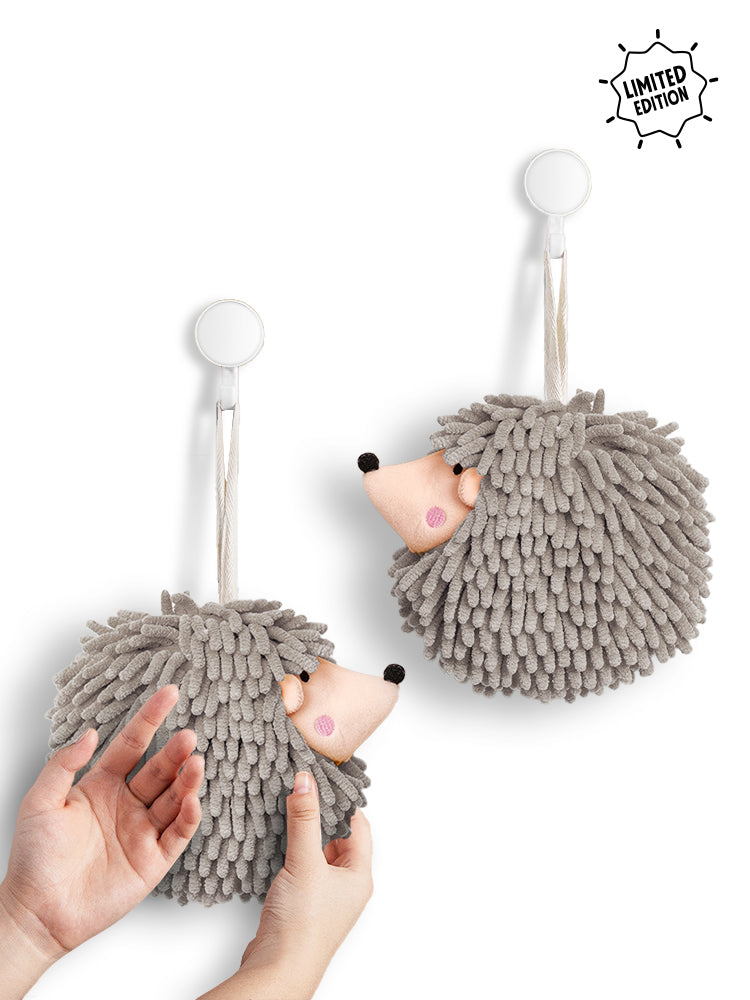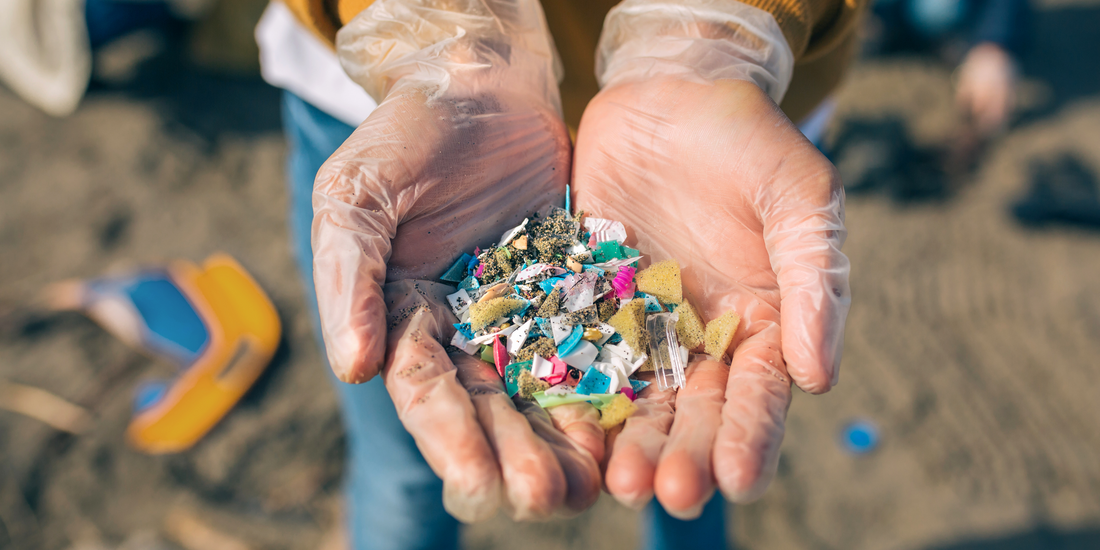
Edward Carpenter discovered microplastics back in 1972, but they didn’t become known as microplastics for 32 years. A team led by Professor Richard Thompson studied the long-term accumulation of these tiny plastic particles in the oceans in 2004. Since then, microplastics have been of growing concern as they’re found in everything from the fish we eat to the foods we grow.
More alarming is the presence of microplastics in the human body. Studies find them in the brain tissue, blood vessels, and reproductive organs. They’re being found in the most remote areas, but is recycling enough to stop the increase?
What Are Microplastics?
Microplastics are tiny fragments of plastic that do not measure more than 5 millimeters. Many microplastics are microscopic particles, which makes them hard to spot and remove from the grass, water, or soil.
They enter the environment through manufacturing (primary microplastics) and the breakdown of other plastics through exposure to the elements, the breakdown of synthetic fabrics, and normal wear of car tires on pavement (secondary microplastics).
How Microplastics Enter the Environment
One of the easiest ways to understand how microplastics enter the environment is through the increased use of durable, rot-resistant composite lumber. The composite lumber is made from wood fibers, recycled plastic bags and film products, and binders.
Composite lumber is a great way to recycle plastic, but cutting those boards creates tiny particles of sawdust that are easily carried by the wind. Once airborne, the microplastics make it to waterways and soil. From there, they’re ingested by fish, aquatic creatures, and wild animals. In garden soil, they’re absorbed by plant roots and end up in the growing fruits and vegetables.
Airborne particles are just as harmful. You breathe them in, and they’re now in your lungs. It’s believed they accumulate and trigger inflammation and oxidative stress, which may increase the risk of asthma, COPD, interstitial lung disease, and lung cancer. Ongoing studies are determining the exact impact of microplastics on health.
Plastics that sit outside in the sun and slowly break down also release microplastics into the environment. That plastic tarp that covers your firewood, those tiny plastic fibers that fray and break off, become microplastics.
PVC piping, cut to shape the plumbing system in your home, creates microplastics. Plastic bags that are caught by the wind and carried from landfills or garbage trucks increase microplastics.
The paint on your home’s exterior, road markings, marine vessels, and outdoor structures releases microplastics. Paint is believed to be one of the largest sources of microplastics. About 37% of the ingredients in paint are a type of plastic. As paint flakes off, an estimated 1.85 million tons of microplastics enter the environment around the world every year.
Parts of the manufacturing industry also release microplastics. Suppose your plant produces plastic dolls. They’re formed in molds, and excess plastic is trimmed off before the item is sanded to ensure a smooth surface. That process releases microplastics. Companies that make plastic pellets to be used by other manufacturers also release microplastics. Even the best air filtration system isn’t going to catch nano particles of plastic.
As those particles become airborne, they’re able to reach the most remote areas. Researchers have found microplastics in:
- Fresh fallen snow in Antarctica
- Mariana Trench
- Mount Everest’s peak
- Pyrenees
- The remote Tibetan plateau
Recycling Isn’t a Perfect Solution
The problem with recycling is that it can’t ensure microplastics never enter the atmosphere. The process of recycling involves chopping up the recycling into particles to be melted down and reused. Any tiny fragments of plastic that escape into the air and settle with dust are going to end up in the environment.
The recycling process itself creates microplastics. As a plastic item is shredded and melted to create plastic pellets, it leads to microplastics.
Breakthroughs in Microplastic Removal
Recycling more plastic isn’t the solution to stopping microplastics. What will work? Scientists continue to study removal methods, but while it does remove microplastics in different situations, there are still questions about what to do with the captured microplastics.
One study found that pine and spruce bark helped remove microplastics from water sources. However, what do you do with the pine and spruce bark after?
Scientists have also found great success in using a buoyant hydrogel to capture and bring microplastics to the surface of water, where they’re collected. Again, you still must figure out how to recycle those materials without microplastics being released into the atmosphere again.
A third study involves the use of a foam made from cotton and squid bones. It’s found to remove 99.9% of microplastics from water. Once captured, though, there’s no information on how the researchers plan to dispose of the foam and microplastics in a safe, effective manner.
Reduction of Microplastics Starts With Changing Habits
The best way to reduce microplastics is to end people’s reliance on single-use plastics. Switching from plastic products is important. It stops the manufacturing of plastic feedstock, which reduces microplastics significantly. It also forces people to embrace a lifestyle where items are used for years or decades before they go to a landfill.
Think through your daily routine. You wash your body, face, and hair with the soaps you purchased at the store. Switch to bar soaps or refillable beauty care products and eliminate several single-use plastic bottles.
Refill stores are popping up across the nation. Bring a container, fill it with whatever you need, and pay only for the household cleaning or personal care product. You use the same container for years, which greatly reduces the use of plastic containers.
When you use a refill store, you can fill up containers with items like:
- Body oil
- Body wash
- Cleaning spray
- Conditioner
- Dish soap
- Fabric softener
- Hand soap
- Laundry detergent
- Lotion
- Shampoo
- Shaving cream
- Window cleaner
Not only do you reduce your consumption of single-use plastic, but you also rid your cupboards of unnecessary clutter. You have one bottle instead of multiple bottles. The downside is that people must use the same products, which can be problematic if someone in your home has thin hair and another has thick, curly hair. It can’t take time to find the best products for everyone in your home.
You also have to support businesses that are doing their part. If you have a choice between Product A that uses 100% recycled plastic versus Product B that uses 50% recycled plastic, support the company that’s gone all-in on the circular economy.
When you do have plastics to recycle, make sure you do it correctly. Plastic film and single-use shopping bags are not recycled in your curbside bin. Save them for your next trip to a grocery store with a plastic film recycling bin.
Know what plastics are recyclable. If you put in a number of plastic bottles or containers that are not accepted, you increase the risk of that entire load going into a trash bin instead. Don’t put all plastics in your curbside container and hope for the best. Recycle Nation’s online search tool helps you determine what plastics are taken in your area and where to bring them.
Source: Beegs. (2025h, September 17). Microplastics: Can recycling really help reduce them? - RecycleNation. RecycleNation. https://recyclenation.com/2025/09/microplastics-can-recycling-really-help-reduce-them/


